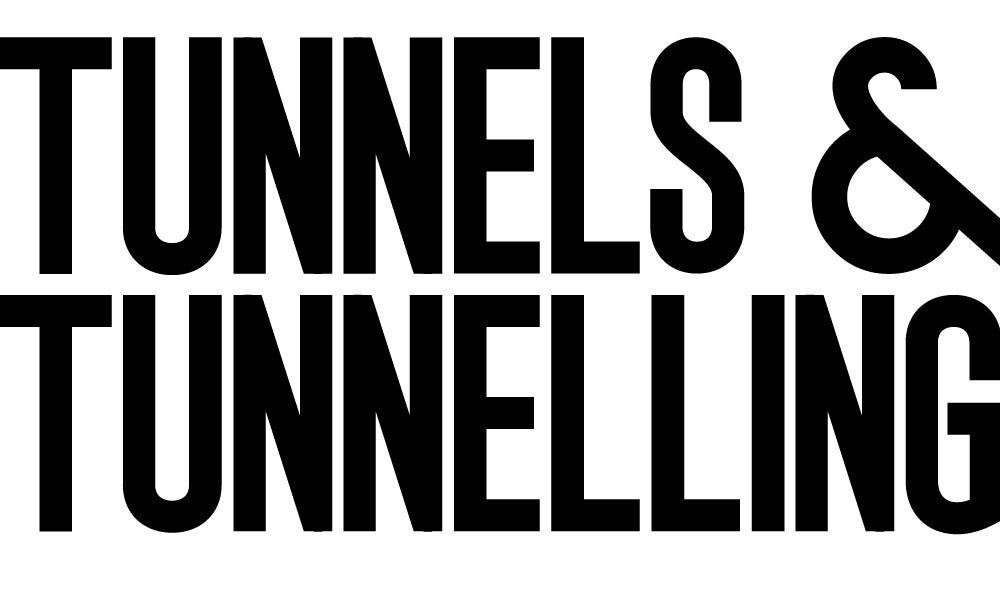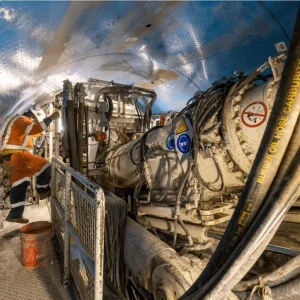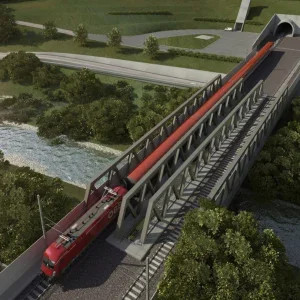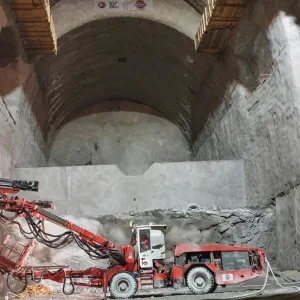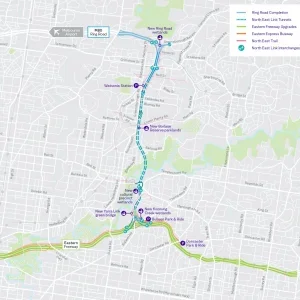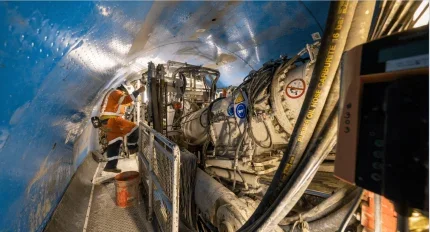
Tunnelling was completed on Auckland’s Central Interceptor today when TBM Hiwa-i-te-Rangi broke into a shaft at Point Erin Reserve, Herne Bay.
The TBM, which was launched from Māngere Wastewater Treatment Plant in July 2021, has completed a 16.2km-long drive.
The 200m-long Herrenknecht TBM has travelled under Manukau Harbour, across the city and laid more than 10,000 rings to build New Zealand’s longest wastewater tunnel. Each day she laid eight to 10 rings and made an advance of around 22m. The concrete rings are coated with a plastic liner to protect against the corrosive effects of wastewater, to ensure the tunnel lasts 100 years.
Chief programme delivery officer Shayne Cunis said the breakthrough was a huge milestone and testament to the skills of the tunnelling team provided by Ghella Abergeldie Joint Venture:
“The tunnellers have worked 24 hours per day, six days a week to build the tunnel. This is world class engineering, and it’s been completed safely, economically and on time, which is rare for any major infrastructure project,” he said.
“The TBM has been through 10 shafts, but breakthroughs never get old, and we’ll always remember this final one. I am incredibly proud of the 600 staff who’ve worked on this project. This is a very special day.”
Ghella Abergeldie project director Francesco Saibene said the Central Interceptor was the longest tunnel Ghella had built with a single TBM and it rated highly among other international infrastructure projects because of the technical complexities.
“We had a number of challenges to overcome, including crossing the Manukau Harbour and tunnelling just 15m below the seabed, as well as tunnelling 110m deep below the Hillsborough Ridge, Mount Roskill,” he said.
“We did all this despite the Covid-19 pandemic, skills shortages of skills, hyperinflation and major storms. We are very proud of our team.”
It is the first time Ghella has worked in New Zealand. The company has committed to staying in the country following the government’s recent infrastructure investment summit.
In coming weeks, TBM Hiwa-i-te-Rangi will be removed from the shaft. Elsewhere, the tunnel will continue to be connected to the existing wastewater network.
Last month, the southern half of the tunnel from Blockhouse Bay south, went live. A new pump station at Māngere sends combined stormwater and wastewater flows from the tunnel to the treatment plant for processing.
Once the NZ$1.6bn project and associated work in Herne Bay is completed in 2028, it will reduce 80% of wet weather overflows into streams along the tunnel catchment and improve water quality at beaches. It will also cater for future urban growth and create a more resilient wastewater network.
